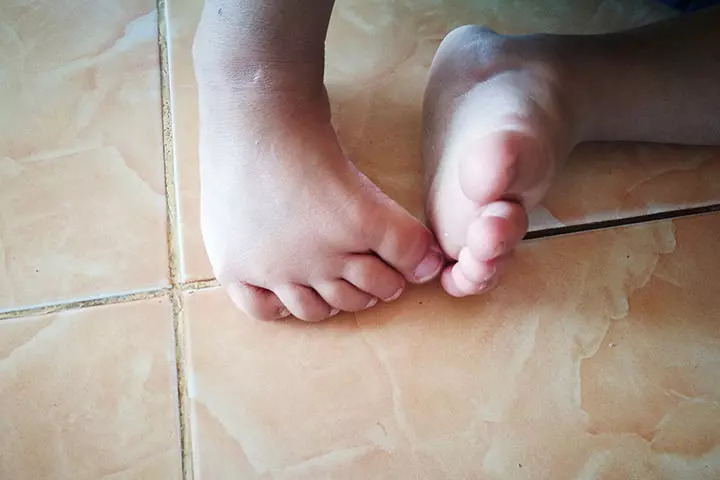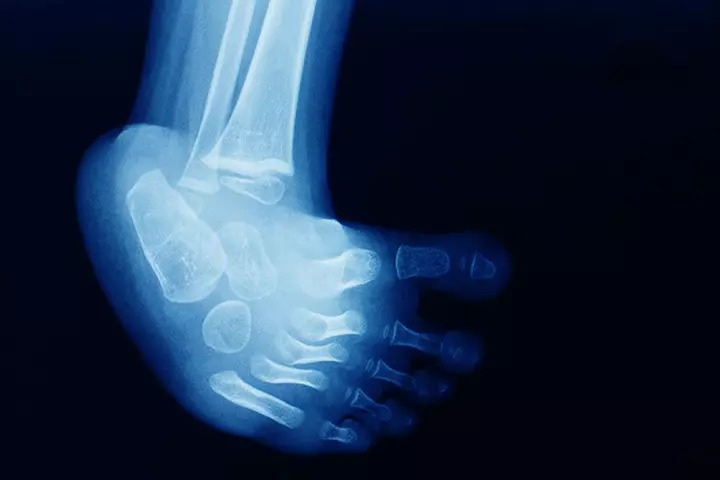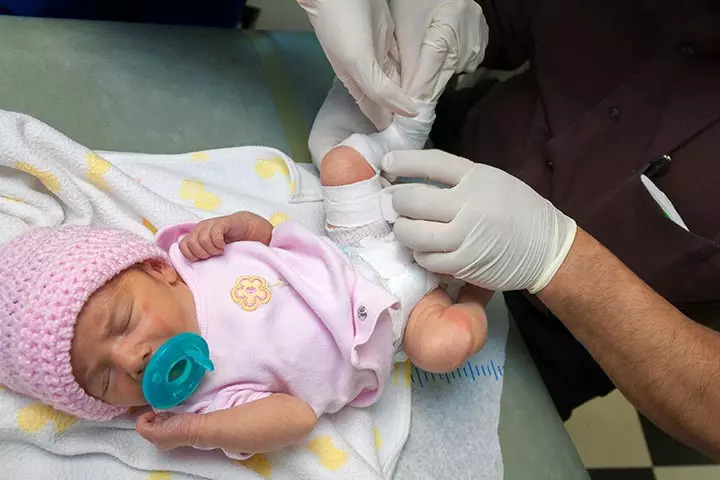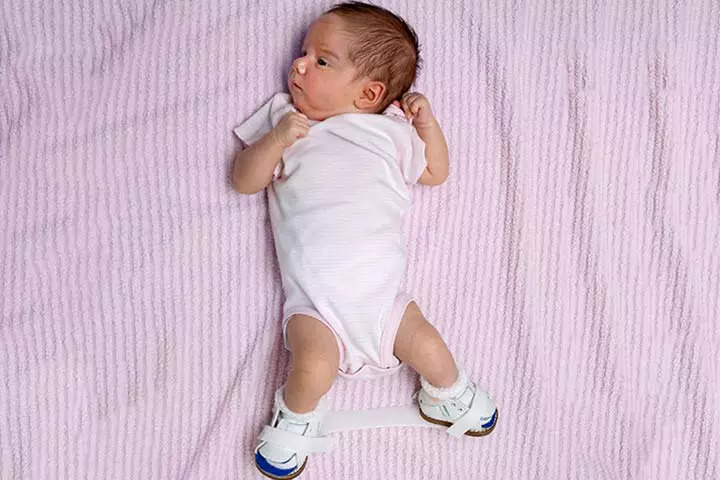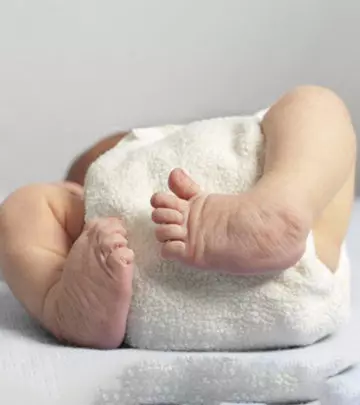
Image: Shutterstock
A newborn’s appearance might not be anything like you would have imagined. They’re certainly not born with the peaches-and-pink complexion or picture-perfect features. Most of those weird-looking features of a newborn are nothing to worry about though. It’s only with time that their skin gets better and the facial features and limbs start taking a definite shape. However, certain features might persist for a long time becoming a cause of concern for new parents. One such feature is when a newborn’s feet are turned inward. This condition is known as clubfoot. In medical terms, it is also known as talipes equinovarus (TEV) or congenital talipes equinovarus (CTEV) (1). Here, we discuss this condition in a little more detail.
Symptoms Of Club Foot
Club foot usually occurs due to shortened tendons on the inside of the leg. The bones of the legs are unusually shaped and the Achilles tendon is also tightened.
Infants who are born with club foot usually exhibit these symptoms:
- The top of their foot is turned downward and inward
- The arch of the foot will be more pronounced and the heels also tend to turn inward
- The calf muscles are underdeveloped as well
- If only one foot is affected instead of both, then the affected foot is often slightly shorter than the normal one, especially at the heel (2)
Causes Of Club Foot
The actual cause of a club foot is relatively unknown although it is often believed that it could be genetic in nature. Certain specific genetic changes are associated with it, but this hasn’t been clearly understood. However, it is not caused due to the fetal position in the uterus. Environmental factors like the mother’s age at the time of conception, smoking habits, or maternal diabetes have also been linked to the occurrence of club foot (3).
Methods Of Diagnosing
Club foot is often visible soon after birth. It can also be detected before delivery during an ultrasound, especially if it affects both feet. But treatment will only be possible after the birth of the baby. However, irrespective of when the condition is detected – before or after birth – the doctor will still recommend further tests to look for other related health issues like spina bifida or muscular dystrophy. X-rays prove helpful in looking at the deformity in more detail. (4)
Treatment For Club Foot (5)
A club foot should not be left untreated. If not treated at the right time, it can lead to many more complications in the future. The treatment is usually initiated within a few weeks of birth and is done to make the feet functional and pain-free. There are different methods for the treatment of club foot.
The Ponsetti Treatment Method
In this method, the newborn’s foot is manipulated by a specialist using their hands with the intention to correct the bend in the foot. Then, with the help of a plaster cast that is applied from the thigh to the toes, the foot of the newborn is held in place. This cast is replaced every week with the baby’s foot being corrected a little more at each of these sessions. The whole process might usually require 4 to 10 sessions that may be followed by minor surgery to loosen the Achilles tendon.
The French Method
In the French method, the affected foot is daily stretched, exercised, massaged, and immobilized with a non-elastic tape. The idea is to move the foot into the correct position slowly. The initial 3 months of this method is conducted by a qualified physical therapist. It is during this time that most of the improvement occurs. Parents are also trained in the same duration so some of those exercises can be continued at home as well.
Surgery
Depending on the severity of the case, surgery might also be conducted. However, it is done only after other non-surgical methods fail.
A club foot can definitely worry parents of a newborn. However, this condition can be treated in different ways if addressed in time. So, therefore, do not neglect and leave it untreated. For more details and treatment options, make sure you discuss your concerns with your pediatrician.

